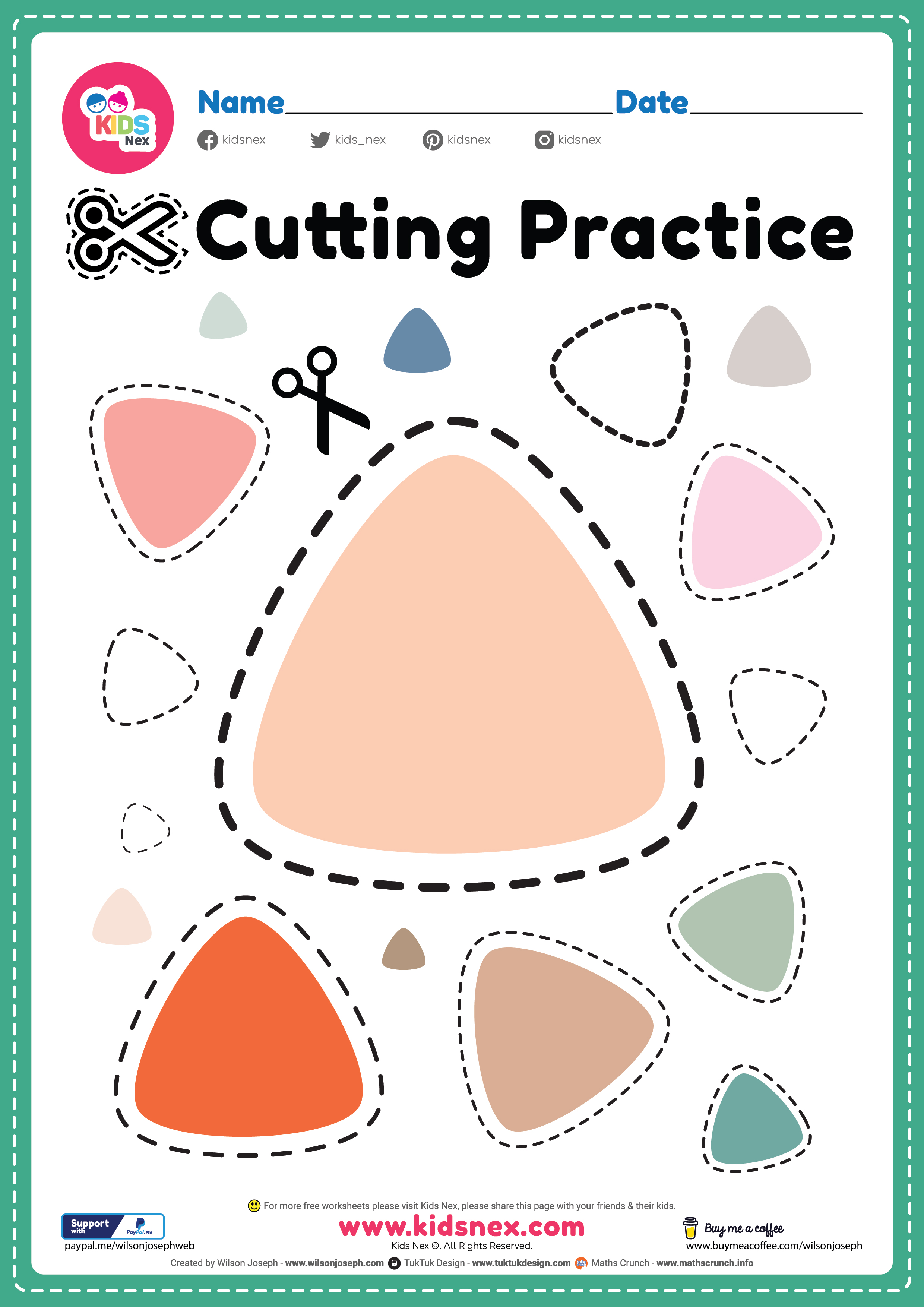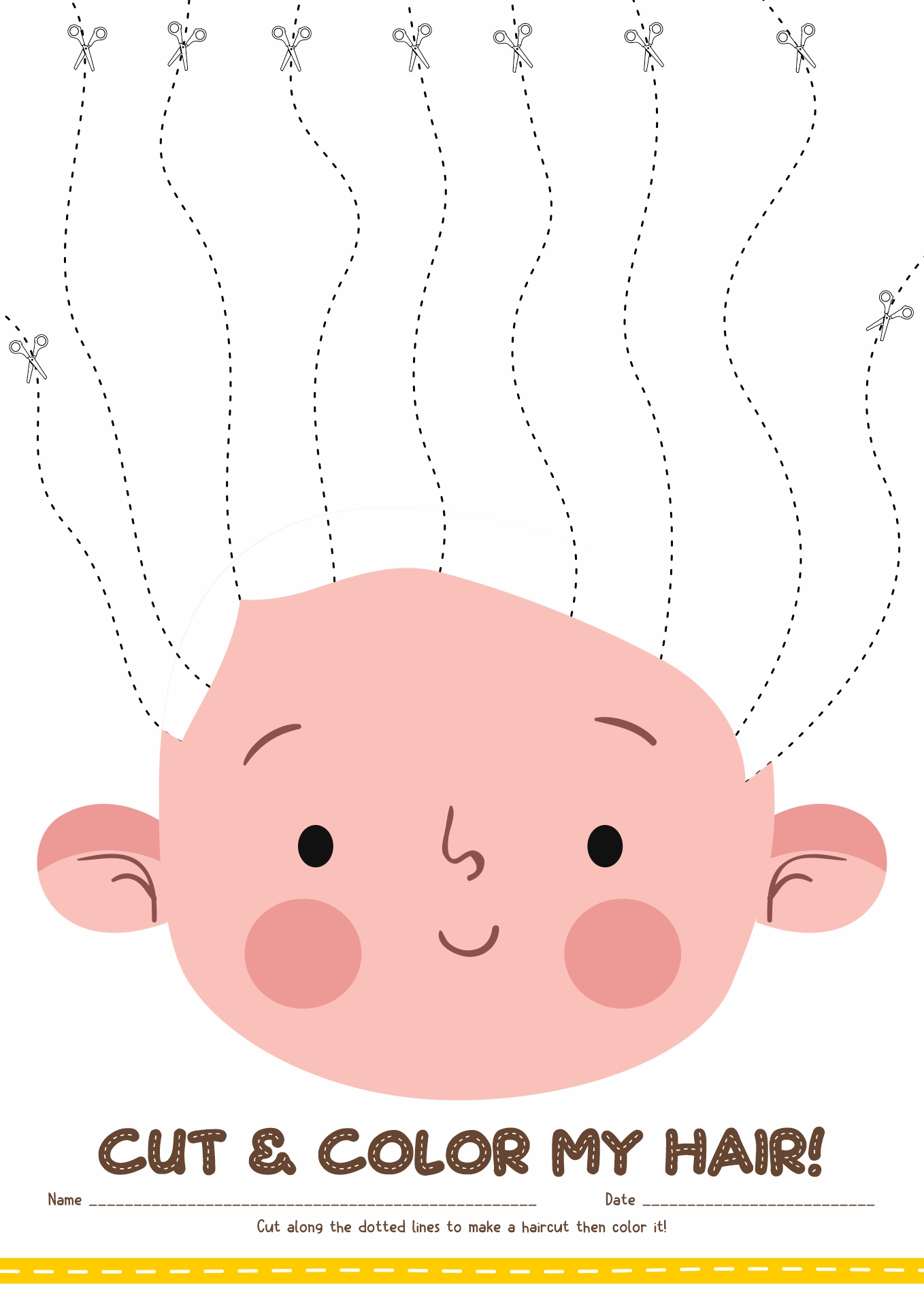As educators, we understand the importance of developing fine motor skills in young children. One skill that plays a vital role in their overall development is cutting. By exposing them to cutting practice at an early age, we can help them hone their hand-eye coordination, improve their dexterity, and enhance their cognitive abilities. To assist you in this endeavor, we have curated a collection of cutting practice resources for preschoolers and kindergartners.
Cutting Skills Preschool - Free Printable PDF for Kids
 This resource offers a downloadable PDF that includes various cutting practice activities for preschoolers. The colorful illustrations and engaging tasks make it an ideal pick for young learners. Through this resource, children can improve their scissor skills while having fun.
This resource offers a downloadable PDF that includes various cutting practice activities for preschoolers. The colorful illustrations and engaging tasks make it an ideal pick for young learners. Through this resource, children can improve their scissor skills while having fun.
Cutting Skills Worksheets For Preschoolers - Free Kite Scissor Skills
 These printable worksheets focus on developing scissor skills through kite-themed activities. By cutting along the solid horizontal lines, children not only practice their cutting abilities but also work on following directions and hand-eye coordination.
These printable worksheets focus on developing scissor skills through kite-themed activities. By cutting along the solid horizontal lines, children not only practice their cutting abilities but also work on following directions and hand-eye coordination.
Printable Kindergarten Cutting Practice
 Designed specifically for kindergartners, this printable cutting practice resource offers a wide range of cutting exercises. From straight lines to more complex shapes, these worksheets provide children with ample opportunities to refine their cutting skills as they progress through the kindergarten curriculum.
Designed specifically for kindergartners, this printable cutting practice resource offers a wide range of cutting exercises. From straight lines to more complex shapes, these worksheets provide children with ample opportunities to refine their cutting skills as they progress through the kindergarten curriculum.
Cutting Worksheets For Kindergarten - Printable Kindergarten Worksheets
 These cutting worksheets are tailored to suit the needs of kindergarten students. With clear guidelines and engaging illustrations, children will enjoy practicing their cutting techniques. As they become more proficient, they can tackle more intricate patterns.
These cutting worksheets are tailored to suit the needs of kindergarten students. With clear guidelines and engaging illustrations, children will enjoy practicing their cutting techniques. As they become more proficient, they can tackle more intricate patterns.
Kindergarten Cutting Practice and Assessment by Miss Artsy | TpT
 This resource, available on Teachers Pay Teachers, provides cutting practice worksheets along with an assessment component. It allows educators to track their students’ progress and identify areas that may need additional attention. The engaging activities make learning fun while promoting refinement of cutting skills.
This resource, available on Teachers Pay Teachers, provides cutting practice worksheets along with an assessment component. It allows educators to track their students’ progress and identify areas that may need additional attention. The engaging activities make learning fun while promoting refinement of cutting skills.
10 Printable Preschool Worksheets Cutting Shapes ~ Coloring Style
 These printable preschool worksheets combine cutting practice with coloring, making them an exciting and creative activity for young learners. By following the lines and cutting out various shapes, children enhance their fine motor skills while exploring their artistic side.
These printable preschool worksheets combine cutting practice with coloring, making them an exciting and creative activity for young learners. By following the lines and cutting out various shapes, children enhance their fine motor skills while exploring their artistic side.
Pin on science Insects
 Not only does this resource provide cutting practice, but it also introduces children to the fascinating world of insects. By cutting along the lines and assembling the different parts, students engage in hands-on learning while improving their scissor skills.
Not only does this resource provide cutting practice, but it also introduces children to the fascinating world of insects. By cutting along the lines and assembling the different parts, students engage in hands-on learning while improving their scissor skills.
Pin on Printable Worksheet Template
 This printable worksheet template offers a variety of cutting activities suitable for preschoolers and kindergartners. The visually appealing layouts and diverse cutting exercises make it an excellent resource for practitioners looking to support their students’ fine motor development.
This printable worksheet template offers a variety of cutting activities suitable for preschoolers and kindergartners. The visually appealing layouts and diverse cutting exercises make it an excellent resource for practitioners looking to support their students’ fine motor development.
14 Best Images of Preschool Cutting Skills Worksheets - Free Printable
 This collection of cutting skills worksheets covers a wide range of cutting exercises suitable for preschoolers. From basic lines to complex designs, these worksheets provide ample opportunities for young learners to enhance their scissor skills. The free printable format makes it easily accessible for educators and parents alike.
This collection of cutting skills worksheets covers a wide range of cutting exercises suitable for preschoolers. From basic lines to complex designs, these worksheets provide ample opportunities for young learners to enhance their scissor skills. The free printable format makes it easily accessible for educators and parents alike.
Pin on Printable Worksheet For Kindergarten
 Designed specifically for kindergarten students, this printable worksheet offers cutting practice exercises in an engaging format. As children work on cutting along the dotted lines, they simultaneously develop their fine motor skills and hand-eye coordination, setting a strong foundation for future academic success.
Designed specifically for kindergarten students, this printable worksheet offers cutting practice exercises in an engaging format. As children work on cutting along the dotted lines, they simultaneously develop their fine motor skills and hand-eye coordination, setting a strong foundation for future academic success.
These cutting practice resources provide educators and parents with valuable tools to enhance children’s fine motor skills. By incorporating these activities into their daily routines, educators can offer a stimulating learning environment that promotes the holistic development of young learners.